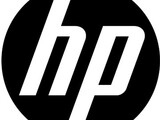Continuous Innovation Required of Today’s Thriving Business
In today’s idea economy, businesses must start fast and stay fast, said Scott Wiest, the chief technologist for hybrid IT in North America at Hewlett Packard Enterprise.
Companies benefit from taking a step beyond hybrid IT by adopting a hybrid business model, Wiest said in a presentation during the Preparing for the Future SummIT, produced by CDW, in Nashville, Tenn., on Tuesday.
“It’s much like an aircraft. If you have velocity, you can keep lift. If you don’t have velocity, you will stall and fall out of the sky,” Wiest said. “For the foreseeable future, we must be focused on achieving continuous innovation in the face of ferocious competition.”
To stay flexible and thus maintain speed, businesses should be ready to change operational modes, revenue streams or other aspects of the business as circumstances demand. Meanwhile, businesses should prepare for digital transformation that involves hundreds of continuous transformations across the enterprise.
“Most of us spent careers on systems of record,” Wiest said. “Now, we are working on systems of engagement or interaction at the edge. It’s very disruptive. This shift is about making continuous innovation the heart of everything you do.”
SIGN UP: Get more news from the BizTech newsletter in your inbox every two weeks!
How to Achieve Digital Transformation
Businesses must look into the future over the next three to five years and plan accordingly, Wiest said. To maintain the appropriate footing, companies should assess three approaches to digital transformation:
- IT transformation, which improves agility and frees up budget for innovation
- Business operations transformation, which improves customer experience, products and services, and core operations
- Business model transformation, which requires continuous innovation
According to Wiest, digital leaders excel at continuous business innovation. Rapidly shifting technology architectures enable the applications driving the idea economy. The barriers to entry are low in the idea economy, he said. Startups can now define spaces once dominated by large, established companies.
“Most people talk about hybrid infrastructure or hybrid cloud. I submit to you that it’s hybrid operating model,” Wiest said.
Cloud computing is a tool to be deployed when it works best for your business, Wiest added. “Cloud is an experience, not a destination. I need to use every location for a workload. Use cloud effectively, and use it for innovation, but don’t stay there forever.”
Businesses require the right mix of tools to balance costs, processes, platforms and people in support of their core competency. To truly do so, they should conduct a total cost of ownership to determine benefits of new tools in the future. Many businesses, however, simply conduct a total cost of acquisition with little care to the costs of the future, Wiest said, urging businesses to choose infrastructure that is cloud-ready, predictive and flexible.
Automation of services isn’t enough for the best of companies, Wiest said. Rather, they should strive for “orchestration.” When a service fails, it should heal itself. The alternative is that IT staff waste time tracking down a problem and rebooting the service, he said. Many people understand automation, but they don’t get orchestration.
Plan for the Future with the Right Mix of IT Partners
In exclusive comments after his presentation, Wiest told BizTech that HPE remains innovative thanks in part to partners like Microsoft. “Microsoft is probably our single largest partner in the world,” Wiest said.
Microsoft’s partnership provides HPE with flexibility through its Azure hybrid cloud platforms. With Azure Stack, companies can deploy Azure services from their data centers. Azure Stack is growing slowly and steadily with a big desire to obtain all the benefits offered by the hybrid model, Wiest said.
The healthcare industry is leading in adoption of Azure Stack among business verticals, he said, while the Azure public cloud remains popular in many other areas. As more services become available on Azure Stack, more businesses will adopt it for flexibility and other benefits, Wiest said.
For more articles and videos from the Preparing for the Future SummIT, click here.
>>Download CDW's Modern IT Infrastructure Insight Report to learn more about how organizations are utilizing and benefitting from a hybrid IT approach.









